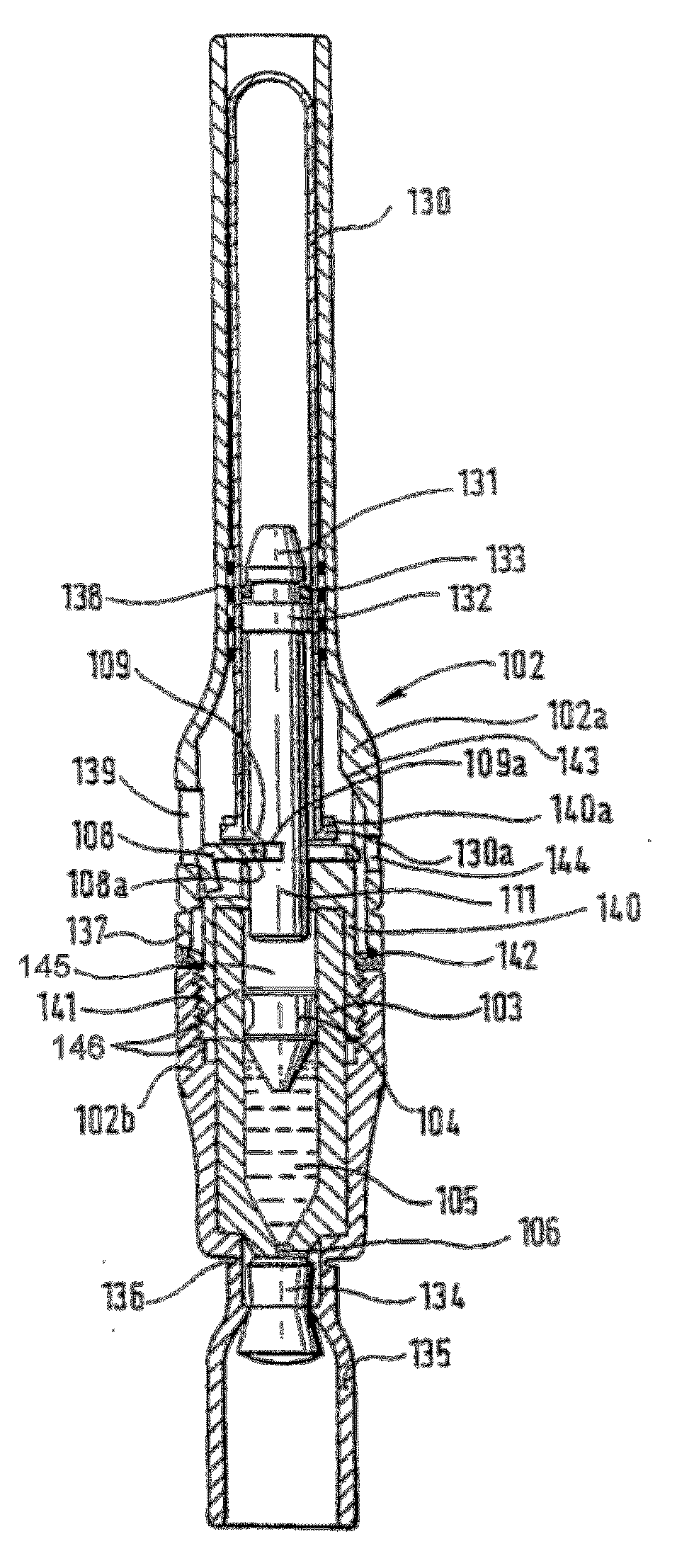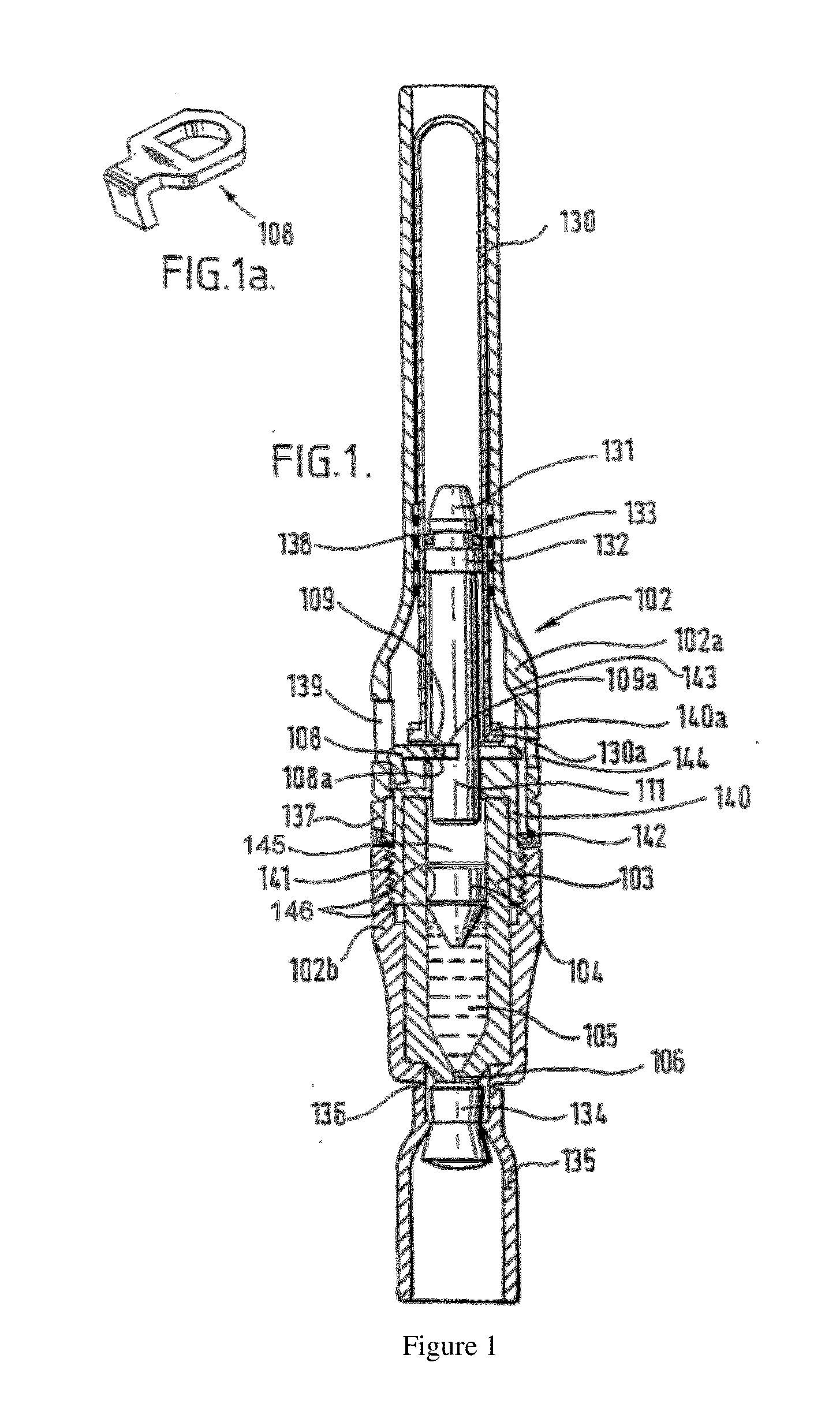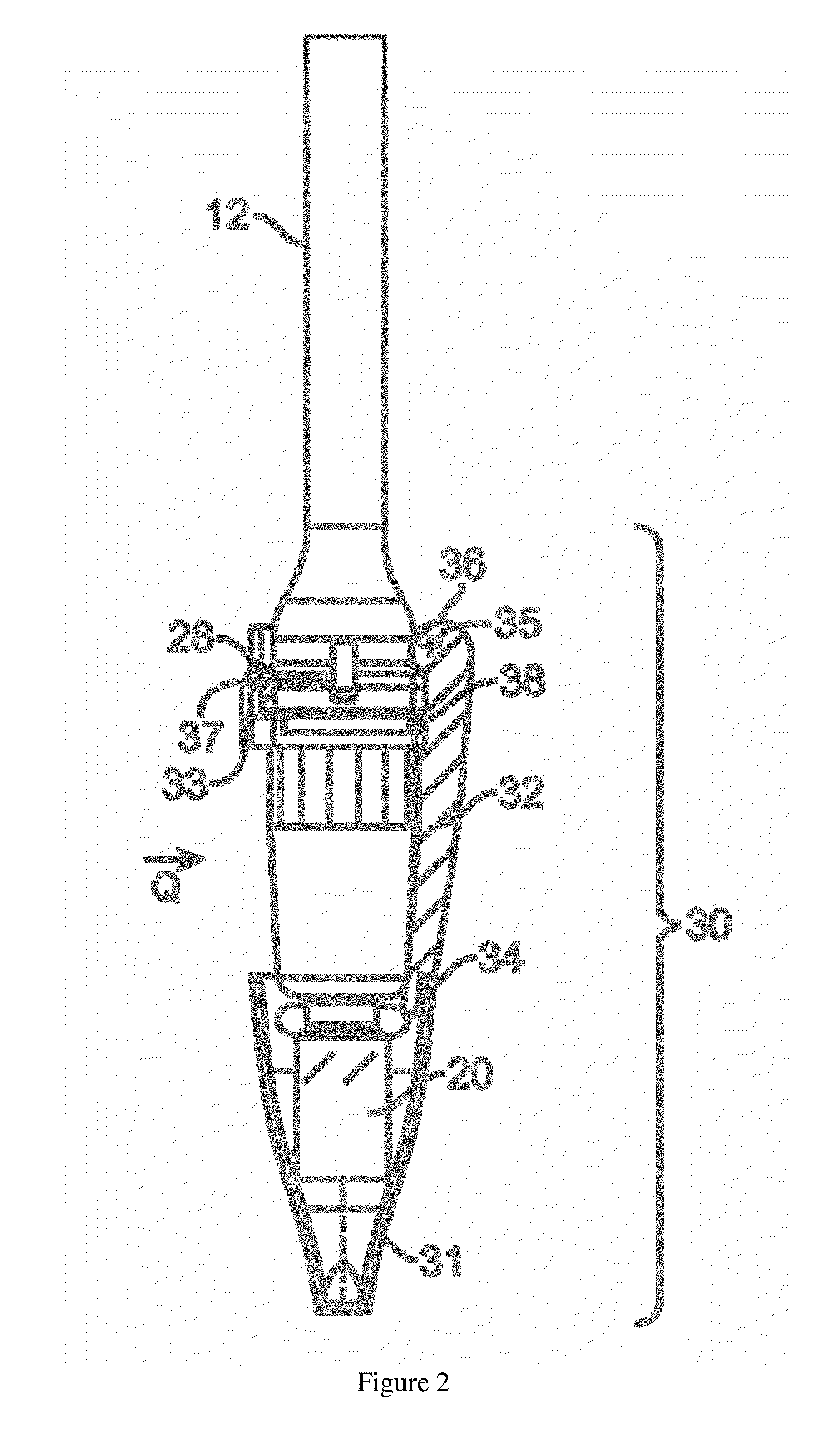Piston closures for drug delivery capsules
a technology of drug delivery capsules and closures, which is applied in the field of pipe closures for drug delivery capsules, can solve the problems of adverse impact on the stability of the formulation, and loss of container closure integrity upon a reduction in temperature, so as to improve the shelf life, reliability, and container closure integrity of the drug capsule. the effect of high sealing contact sealing pressur
- Summary
- Abstract
- Description
- Claims
- Application Information
AI Technical Summary
Benefits of technology
Problems solved by technology
Method used
Image
Examples
example 1
[0166]Drug capsules were constructed using borosilicate glass syringe bodies, and unmodified PTFE pistons. Before assembly the inside diameter of the syringe body and outside diameter of the piston ribs were measured and recorded. Twenty drug capsules were assembled and filled with normal saline.
[0167]Water-filled drug capsules were placed in an incubator and subjected to five thermal cycles between 40° C. and 2° C. The drug capsules were maintained for at least 12 hours at each temperature extreme. Following the thermal cycling, the pistons were subjected to a continuous dye ingress test for 24 hours at room temperature (20° C.).
[0168]The results of the test are shown in FIG. 8. Notably, 12 of the drug capsules exhibited leakage, suggesting these capsules would have difficulty maintaining container closure integrity over the shelf life of the product.
example 2
[0169]20 drug capsules containing pistons made from glass filled PTFE were subjected to a thermal cycling test wherein they were cycled between 40° C. and 2° C. for 12 hours at each temperature for 30 days (i.e. 30 cycles). The piston movement was measured at regular intervals throughout the life cycle of the test. For this test, the maximum acceptable piston movement, based on previously determined requirements, was 0.5 mm.
[0170]A graph of piston movement is shown in FIG. 9. As can be seen from this figure, the maximum acceptable movement was reached at 20 cycles, and was exceeded after 30 cycles.
example 3
[0171]Drug capsules were constructed using borosilicate glass syringe bodies, and modified PTFE pistons. The PTFE was modified by the introduction of less than 1% PPVE. Before assembly the inside diameter of the syringe body and outside diameter of the two piston ribs were measured and recorded. Twenty five drug capsules were assembled and filled with normal saline. The assembled drug capsules were then placed in an environmental chamber, and subjected to a 34 temperature cycles. Each cycle lasted one day and consisted of 12 hours at 40° C., followed by 12 hours at 2° C. After 8, 14, 20 and 34 cycles, the movement of the piston in the direction of the injection orifice was measured. Following the last cycle, the drug capsules were placed in a dye ingress apparatus (see FIG. 7) and tested for leakage.
[0172]The results of these tests are shown in FIG. 10. Notably, as can be seen in the last column of FIG. 10, none of these cartridges exhibited leakage, leading to the expectation that ...
PUM
| Property | Measurement | Unit |
|---|---|---|
| Temperature | aaaaa | aaaaa |
| Temperature | aaaaa | aaaaa |
| Time | aaaaa | aaaaa |
Abstract
Description
Claims
Application Information
 Login to View More
Login to View More - R&D
- Intellectual Property
- Life Sciences
- Materials
- Tech Scout
- Unparalleled Data Quality
- Higher Quality Content
- 60% Fewer Hallucinations
Browse by: Latest US Patents, China's latest patents, Technical Efficacy Thesaurus, Application Domain, Technology Topic, Popular Technical Reports.
© 2025 PatSnap. All rights reserved.Legal|Privacy policy|Modern Slavery Act Transparency Statement|Sitemap|About US| Contact US: help@patsnap.com



